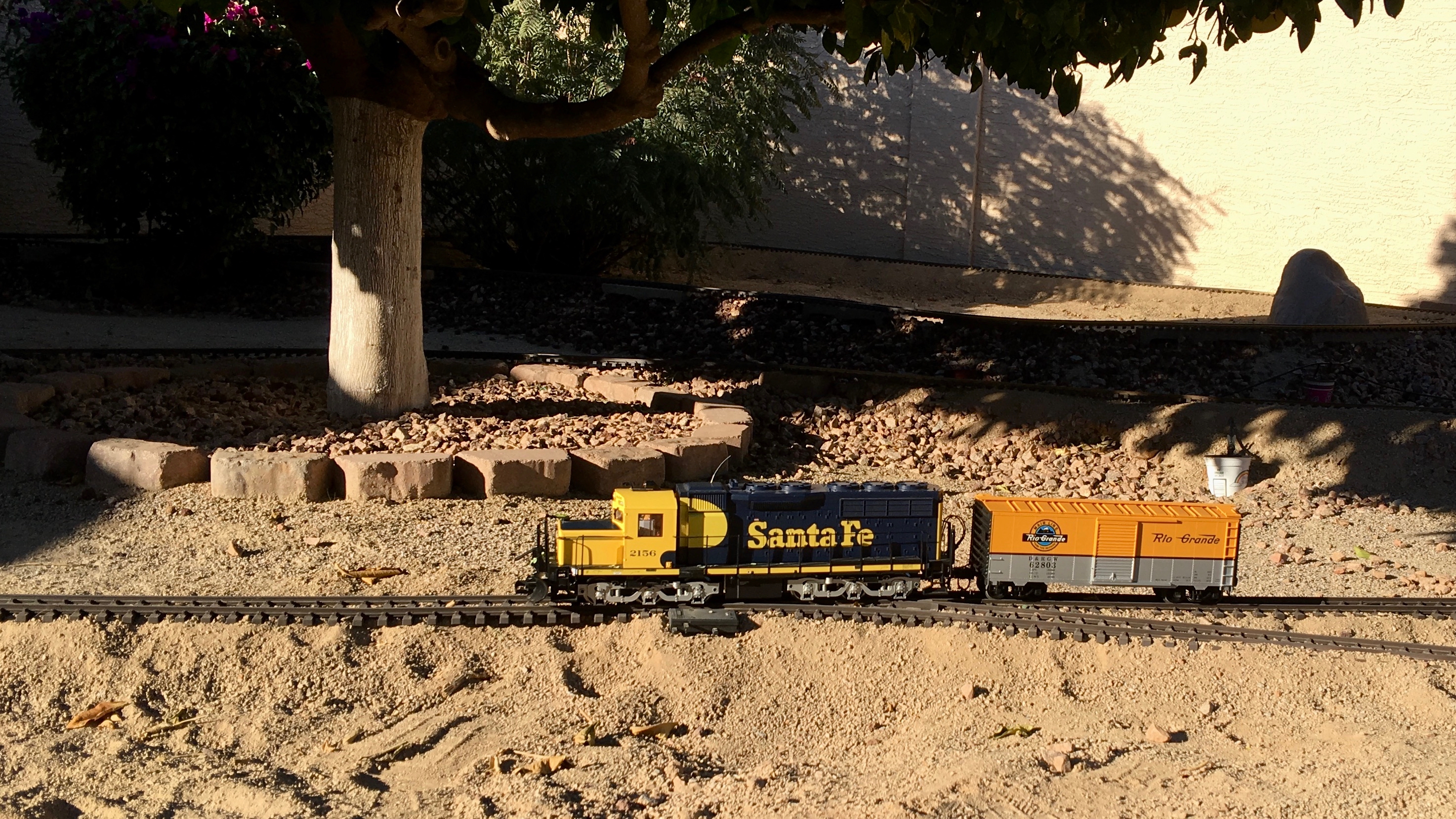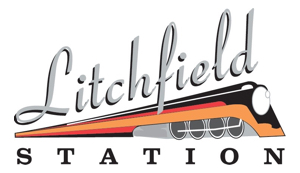Since we moved in 2017, I have been rebuilding the Rocky Mountain Pacific railroad in our back yard. Here are some comments along the (garden rail)way.
I've received the NMRA pike registration renewal for Rocky Mountain Pacific (RMP).
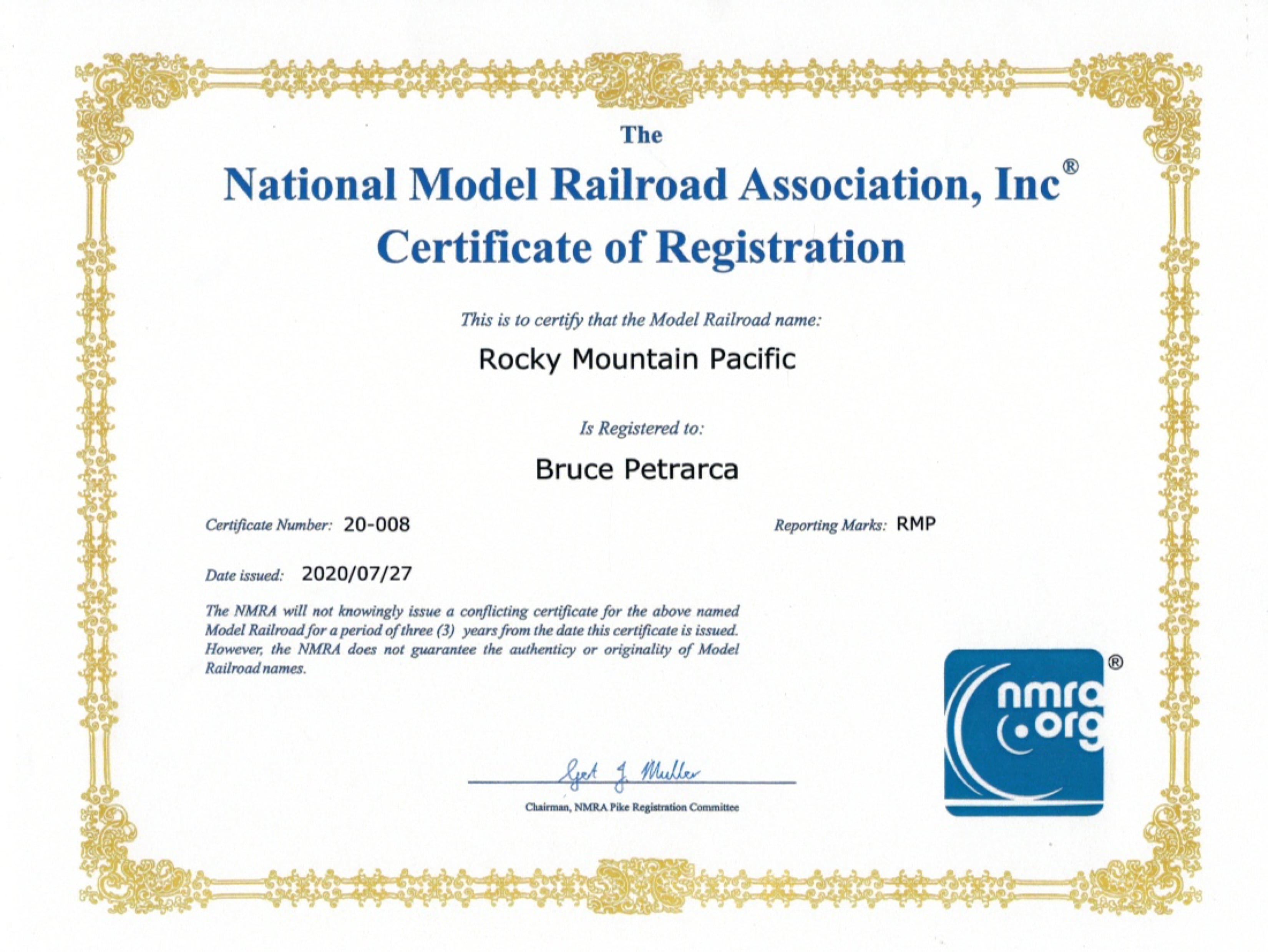
I mentioned that all my future acquisitions of track will be from PIKO. Here's why.
Geometry
PIKO has a larger radius offering (R7 = 1565mm = 61.61 inches) than the LGB 1600 curves (1195mm = 47.05 inches) that were the standard on my last layout. We all know that the broader the radius, the better the trains look and run.
While I don't need them on my layout, PIKO offers curved turnouts specifically designed to move from one radius of their track to another with stock pieces - no cutting and filing.
Rails
While both the tracks are manufactured from code 332 (0.332 inch tall) brass rail, PIKO users higher quality virgin brass, as opposed to LGB's lower quality recycled brass. The rail profiles are identical, so clamps and other devices are interchangeable between the two, as well as with other code 332 brass track.
Ties
If you have ever had LGB tires rot in the sun, raise your hand. PIKO tires are thicker, more durable, and very sun resistant. In fact, we have been using them on the PebbleCreek club layout to replace rotted LGB ties. Sun resistance is very important here in Arizona, where we get rail temperatures up to 160°F in the summer.
Turnouts
The R7 turnouts, that I am using, are designed around the 600mm (about 2 foot) basic length. LGB 16050-type are 440mm long, requiring cutting and filing to have a piece to build into the layout with the idea of replacing it with a turnout later. Also, the diverging route on the PIKO turnouts are made in two pieces, Use the extra piece of track supplied with the turnout to replace a R7 curved track in its entirety. If you leave the extra curved track piece out, you can have shallower crossovers, since the turnout itself is 1/2 of the R7 track.
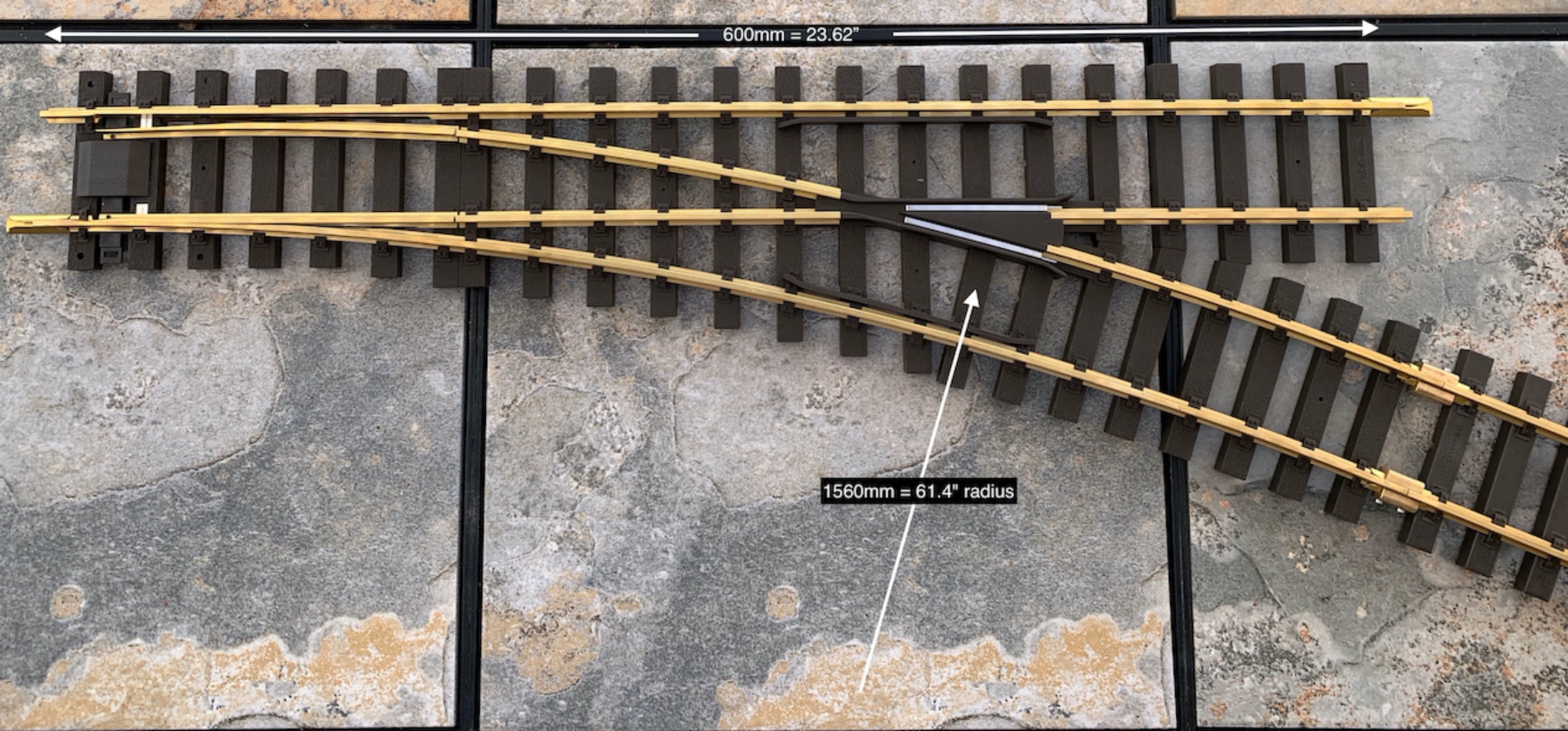
In 2018, I created a track plan for the new version of the Rocky Mountain Pacific in our new back yard.
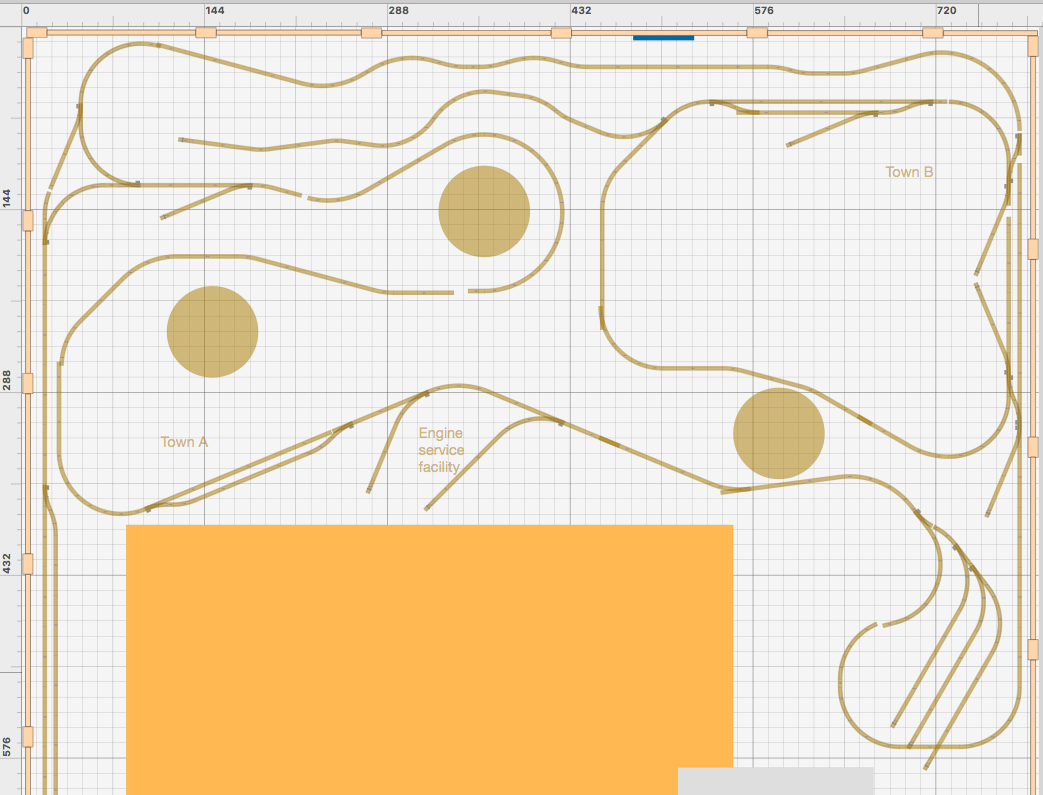
This is, at least, a start. We all know that things evolve: we get new ideas, things don't fit as we thought they would, etc.
But, without a target, things proceed rather willy-nilly.
I am not a Windows guy, so my track planning software is from RailModeler Pro, specifically designed for the Mac. It has libraries for LGB and PIKO track.
My track is all code 332 brass. My legacy track includes LGB turnouts with a variety of brands of straight - the LGB library works fine for all those. New purchases are PIKO, so that library comes into play, too.
Why brass track?
While not cheap, it is the least expensive track and I need a lot. I can get away with the oxidation, because this will be exclusively power-on-board (AKA Dead-Rail, even though that is a club name out of Southern California).
I purchased a Santa Fe F7AB set (WarBonnet scheme) from the PebbleCreek Model Railroad Club when they disbanded. I had started on a power-on-board installation into the A unit. I have now finished the installation and have information about it on my site. CLICK HERE to see that page.
Winter of 2018 - 2019, I got some of the track laid in the back yard - starting in the upper left of the track plan. Here is a PCMRC loco doing a test run under AirWire control with battery power coming from the box car. These battery cars were discussed in a three month run of my columns in Model Railroad Hobbyist magazine. CLICK HERE to go to the first article. The columns continue for two more months: HERE and HERE.
